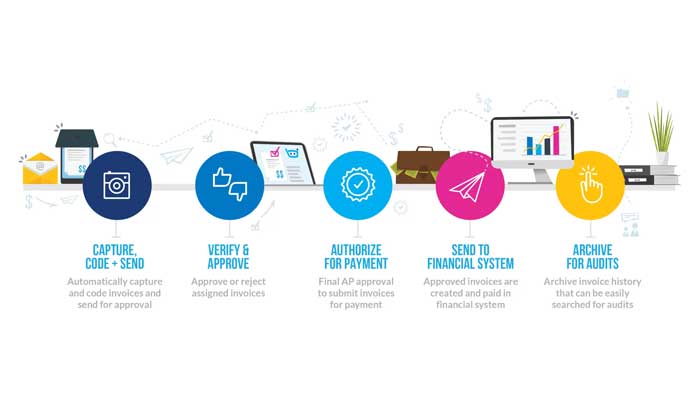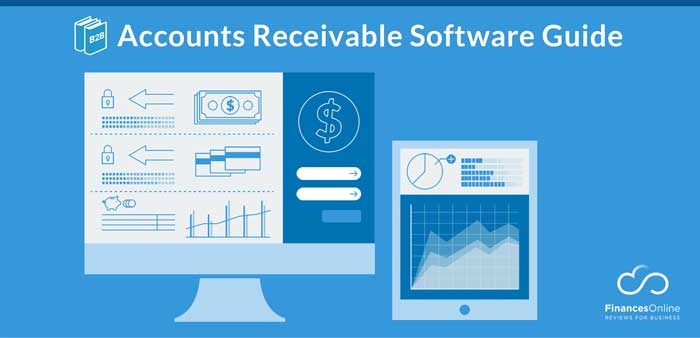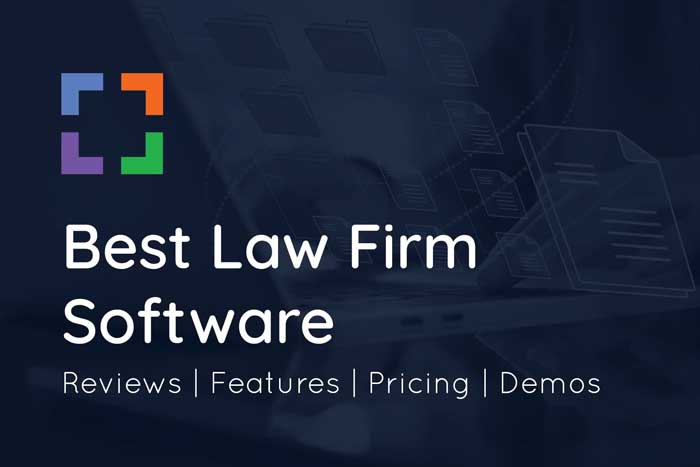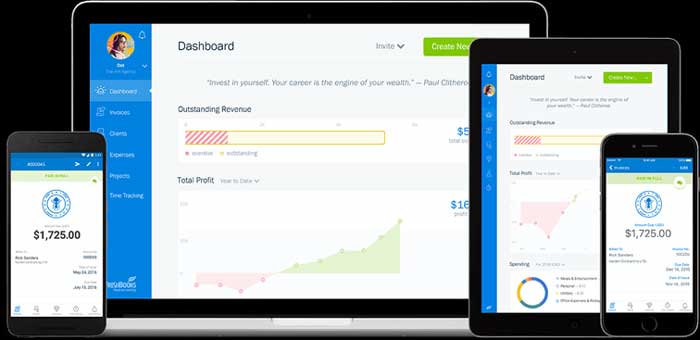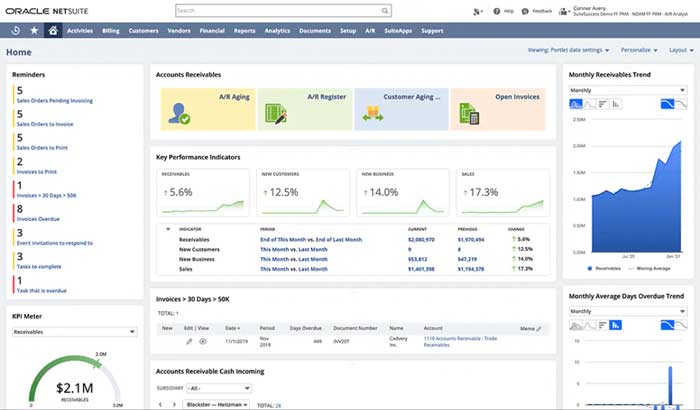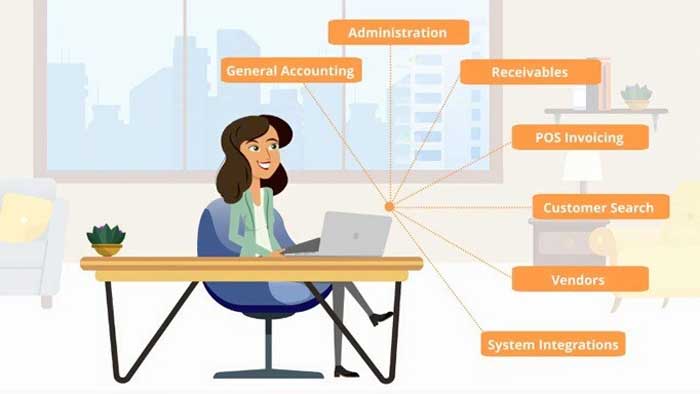Explore the capabilities of the QuickBooks Retail POS system in our comprehensive review. Learn how it can enhance your business operations, simplify accounting, and provide valuable insights. Get a unique perspective and make an informed decision.
Whats is Pos System?
A Point of Sale (POS) setup is a sophisticated combination of hardware and software that enables businesses to receive payments from customers and transact sales in-person. It seamlessly routes the funds from each sale to the business’s bank account.
Advanced POS systems have evolved beyond being just a cash register and now offer an array of features to aid merchants. This includes inventory management, sales tracking, staff management, customer data collection, and more.
Gone are the days where a POS system was restricted to a traditional cash register setup. Today’s modern POS systems are primarily software-based and can be run on a tablet or smartphone, giving merchants the freedom to serve customers and process payments from any location.
The QuickBooks POS system is a great option for small business owners who use QuickBooks Desktop for computing and prefer locally installed software over cloud-based software.
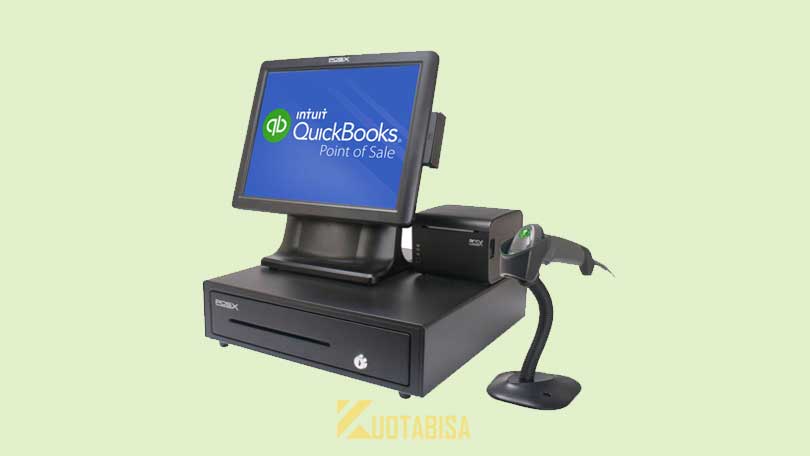
Also, the POS solution can be limited for entrepreneurs who want more flexibility.
Read to: Pos Systems for Bars: How to Choose
QuickBooks markets its POS system to small retail businesses, clothing stores, jewelry stores, sporting goods or bicycle stores, furniture stores, and home improvement related businesses door.
POS systems are not suitable for restaurants and cafes.
Because it charges an additional monthly fee for e-commerce integration, stores that do most of their business online should explore alternatives.
WHAT IS QUICKBOOKS POS?
QuickBooks POS is a locally installed point of sale system that integrates with QuickBooks Desktop accounting software.
This POS system is perfectly suited for retail but is capable of handling other types of service-oriented businesses.
QuickBooks POS can meet the needs of almost any size business, from mid-sized retail stores to large chains.
Pros and Cons
Here is the pros and cons of using QuickBooks:
Pros
The benefits of using QuickBooks are:
QuickBooks integrations
QuickBooks POS is a natural fit for businesses dedicated to the enterprise payroll and accounting product suite.
Customers with QuickBooks Desktop can sync point-of-sale data with their chart of accounts, so there’s no need to manually enter data.
Strong inventory management
In addition to provide you with real-time inventory updates, the system can synchronize inventory across multiple locations.
As a result, you can track what’s selling best, and then use that information to identify employee scheduling needs.
Cons
Here is the contra of using Quickbooks:
Only integrates directly with QuickBooks Desktop
QuickBooks POS is installed locally instead of being cloud-based.
This may be a plus for some companies that are hesitant to move to a cloud-based system, but it also has its limitations.
While cloud-based accounting software is becoming increasingly popular, the POS system only integrates directly with QuickBooks Desktop, not QuickBooks Online.
Expensive
Even if you go with the most basic setup, your business will still have to pay a large amount – and that’s before you buy any hardware.
And if your store has multiple locations, you’ll have to pay for a separate software license for each location.
This can be a deal breaker for small businesses, especially when companies like Square and Toast offer free point-of-sale software.
Expert customer service isn’t free
Customers can chat with a customer service representative, but expert technical support costs more. POS support plan is $79 per month and gives customers unlimited access to POS experts.
Annual plan, $589 per year, includes data recovery services.
Pricing
Quickbooks offers 3 plans, such as:
Quickbooks Pos Basic
QuickBooks POS Basic is designed for smaller and midsize stores.
It costs a one-time $1,200 and includes the following features:
- Inventory tracking
- Basic report
- sell rings
- Accept contactless payments
- E-commerce integration
- Customer data management
Quickbooks Pos Pro
QuickBooks POS Pro charges a one-time fee of $1,700.
Pro gives you all the features available to basic users, plus the following:
- Employee tracking and payroll
- Layaway and gift cards
- Rewards and Loyalty Program
- Advanced reporting
- Create an order
Quickbooks Pos Multi-Store
QuickBooks POS Multi-Store charges a one-time fee of $1,900 and gives you all the features available to Pro users, but with the ability to use QuickBooks POS in multiple stores.
It also includes the following features:
- Manage multiple stores
- Inventory management and rotation
- Advanced inventory and cross-store reporting
- These are per-user floating licenses, which means that if you need to have multiple computers/users accessing the QBPOS backend database concurrently, you will need to purchase a license for each machine
QuickBooks occasionally offers promotional discounts, such as 20% off or a free hardware bundle, so be sure to check for current promotions before you buy.
A 30-day free trial is also offered without a credit card to sign up.
Features
Some of the features you will find with QuickBooks POS include:
Contactless Payments
QuickBooks POS allows you to accept contactless payments through Google Pay, Apple Pay, Samsung Pay, EMV credit and debit cards, and contactless credit cards.
Fully-Functioning Multitender POS
POS quickly adds in-stock items to a sale by scanning barcodes, searching by UPC, Alternative Lookup Code (ALU), item number, or item keyword.
You can also create and modify groups and the “Quick Pick” button, or make a quick sale for items that are not yet in stock.
Discounts & Layaway
Custom discounts can be created and applied, and you can set up an order plan.
Returns & Exchanges
Customers can receive barcoded receipts (and gift receipts) to facilitate returns/exchanges.
Pro version features include Document Designer, which allows users to create customizable price tags and receipts.
Real-Time Inventory Management
The inventory module stores item cost, description, parts, color, size, quantity, sale price, tax status, vendor, UPC, ALU, and item control.
You can add items that are not in stock.
You can set low stock alerts.
Style Matrix allows you to enter multiple sizes and colors (or attributes) based on item part, vendor, and description.
Purchase Order Management
QuickBooks Point of Sale offers a built-in ordering feature.
Item barcodes can be scanned to automatically fill in order fields, or orders can be filled out manually. Pro version automatically creates and dispatches orders based on your pre-set re-order levels, provides suggested re-order points based on sales, sets re-order points for each store and ship/track packages using Shipping Manager (UPS exclusive).
Customer Management
Sales can be tracked by each customer – just enter name, address, phone, email and company.
Custom fields allow for additional information, such as your birthday, shoe size, or favorite sports team. In addition, special discounts/coupons can be set up for specific customers.
There is also customer tracking, sales history, and various communication tools for marketing campaigns and program rewards tracking.
Employee Management
The Pro and Multi-Store versions will track employee hours worked and commissions, sending recorded hours to other QuickBooks financial software (such as QuickBooks Payroll or QuickBooks itself) for easy payroll management easy.
Additionally, security allows owners to customize access to certain functions based on employee status (e.g. owner, manager, assistant manager, or associate).
Reporting
The reporting options are rich and detailed, and include best or worst sellers, frequent returns, sales over time, and more.
The reports tab is also used to send merchant service batches to settle your debit/credit transactions and schedule backups of important data to a location of your choice.
Mobile Payments Integration
The Intuit GoPayment integration allows the app to fully sync with your primary QBPOS inventory and allows you to sell and track inventory from your mobile phone or tablet.
To use this feature, you need a GoPayment card reader, an Intuit Go Payment account, and a supported mobile device.
eCommerce Integration
QuickBooks has e-commerce integration with real-time inventory management and simple product listings.
QuickBooks also streamlines shipping and works with popular shopping carts, such as Amazon, Shopify, and Magento. This feature is an add-on and starts at $39/month.
Conclusion
QuickBooks Point of Sale is pretty easy to use and can do a lot more than a simple sales transaction, but there are so many other things you’ll need to worry about that aren’t even related to the functionality of the software.
For customers who have been using the product for a while and want to continue using it or simply prefer integration with QuickBooks software, Intuit’s POS solution will likely continue to be a good product to meet their needs.
However, there are better options available, especially if your business is a good candidate to move to a cloud POS.
